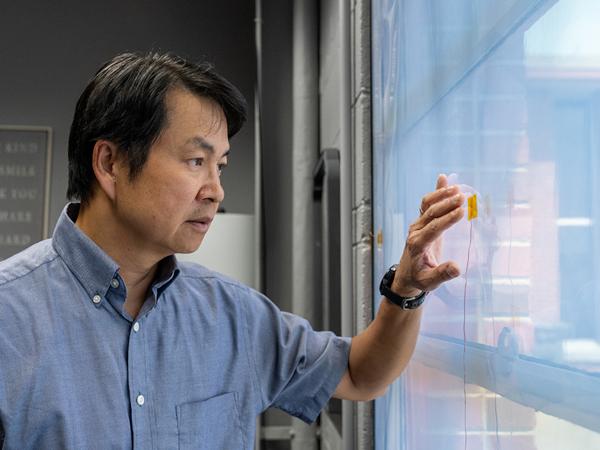
Date: 7 July 2023
Anyone who has ever sat next to a drafty window on cold days knows misery. Anyone who has ever worked in a windowless office knows despair.
“Windows are enormously important to the way we experience the indoor environment,” said Chioke Harris, a researcher in the National Renewable Energy Laboratory’s (NREL’s) Building Energy Science Group. “Windows have an enormous effect on the well-being of building occupants. Given the amount of time people spend indoors, windows have just an outsized influence on the way you feel.”
A corner office may make you feel important, but there is no guarantee you will feel comfortable.
“A lot of those corner offices may be bigger than they really need to be because you're basically pushing the furniture toward the center of the building to get it away from the windows,” said Harris, who worked for the U.S. Department of Energy’s (DOE’s) Building Technologies Office before joining NREL in 2017. “You could be sitting at your desk, and you’ll be freezing or, even worse, you’re boiling hot on one side and freezing on the other because the sun is hitting you from one side.”
The reason for windows research is clear. Overall, DOE estimates, windows account for 8.6% of energy use in buildings. Poorly performing windows drive up energy costs as a building’s heating, ventilating, and air conditioning (HVAC) system attempts to overcome too much heat escaping or too much cold entering the space. Problems with panes can be a real pain.
“These high-rise buildings that are all glass, they’re sort of symbols of energy inefficiency,” said Lance Wheeler, an NREL scientist who developed a photovoltaic (PV) window technology that functions as a solar cell. “What a PV window can allow you to do is let some light in but instead of reflecting it back out into the world, you just convert it into electricity and use it on-site.”
‘People Simply Like Windows’
Builders began erecting edifices with massive walls of windows after World War II. The trend continues to this day, but the 1970s saw the adoption of double-pane windows to reduce energy consumption. Even with improvements, however, windows lack the insulating value of a building wall.
“This is the weakest point in the enclosure,” said Alliston Watts, an NREL researcher with expertise in insulation and durability of windows. “There’s room for improvement.”
Researchers at NREL have been working to improve windows since 1983. Early work formed the basis behind dynamic window technology in which the glass darkens because of temperature or electric current to better shield occupants from the sun. Ongoing research today involves testing windows for durability, demonstrating technologies, and developing new ideas.
“A lot of it is driven just by that human factor: People simply like windows,” said Rob Tenent, lead researcher for NREL’s windows projects.
Tenent has overseen windows research at NREL for nearly a decade. In surveying who he calls “technology scouts” for the major glass and window companies, Tenent asked what they would need to see to sell a product to a real estate developer. They want proof the window performance is as advertised, but they also want a demonstration of durability.
“Putting these things in, it’s not cheap,” he said. “It’s highly disruptive for anybody, for a replacement in particular, so they do not want to have to go back down that path.”
Assessing the durability of a window means taking all manner of possible problems into account. The sealant used around the edge of the glass could degrade, allowing water to collect and form condensation. High winds could stress the glass. Even exposure to ultraviolet light could cut short the expected lifespan of a window. Researchers use a specialized chamber to provide accelerated durability tests.
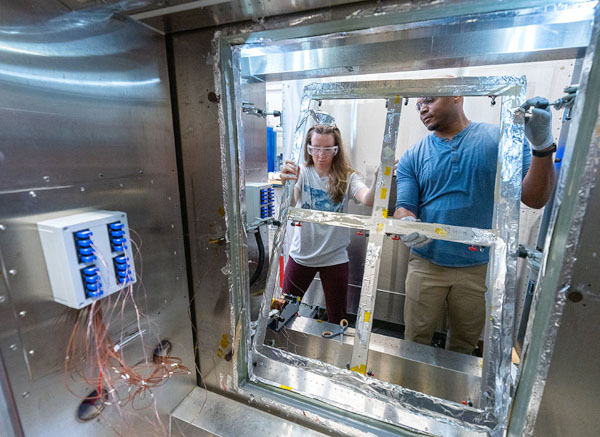
The NREL team developed the scientific basis and current industry standard for the evaluation of dynamic electrochromic windows. The team is now iterating on that success to expand to other emerging window technologies including high thermal performance technologies, such as vacuum insulating glass, advanced multipane constructions, and photovoltaic technologies.
Recently, NREL has also begun to define enhanced methods for the evaluation of the durability of existing window technologies and is working with partners to help improve current industry practice in this area.
Tests are run on sample sizes of windows—typically about 14 inches by 20 inches.
Good windows are an investment, and durability is considered key when purchasers debate adopting new technologies. “Whether or not you actually get the payback, and the return on the investment, is defined by whether or not that window actually lasts,” Tenent said.
The glass industry has embraced double-pane windows, which are more insulating than a single sheet of glass, and experimented with triple-pane windows and their even greater energy efficiency. Research is ongoing into what is known as a secondary window, sometimes called a window insert. Using one or two panes of ultrathin glass, a secondary window can be installed on the room side of an existing window. The idea is to provide a quick and easy improvement to a building’s energy efficiency through this retrofit rather than taking the costly step of replacing every window.
Putting Windows to the Test
NREL researchers have branched out into field validation studies. They used buildings at the Denver Federal Center in Lakewood, Colorado, as a testing ground for various window technologies. The structures there are in the portfolio of the U.S. General Services Administration, which owns or leases more than 8,600 buildings nationwide. Of those, about 500 are considered historic. That means care must be taken to avoid altering how they look.
“You cannot do any architectural changes from the outside. You cannot change the window,” said Kosol Kiatreungwattana, a senior engineer at NREL.
For one assessment, he oversaw a project evaluating the effectiveness of single- and double-pane secondary windows. The evaluation considered the thermal performance of the windows, improvements to comfort, and the amount of energy expended on heating and cooling. Computer simulations also allowed researchers to determine how the windows would perform in other parts of the country. His findings determined the double-pane secondary window performed better than the single-pane version and judged it to be “a good choice for future deployment in most climates.”
NREL researchers are now receiving help with their windows work through a collaboration with the University of Colorado through a joint partnership through the Renewable and Sustainable Energy Institute (RASEI). Students are involved in one project focused on evaluating window performance in the field to better understand how energy performance degrades. Another project dives into considering the effects of condensation on secondary window products.
The use of secondary windows could have the added benefit of incorporating other technologies, such as electrochromics or switchable photovoltaic windows, which have the added benefit of producing power in addition to tinting. Placing them inside the window on the room side would provide an added layer of protection from any durability challenges.
PV window technology has been shown to reduce the amount of heat into a building and to provide better thermal insulation.
“We’re not only adding energy generation, but we’re also improving the thermal performance,” said Wheeler, who has developed a PV window that relies on perovskite solar technology to capture and convert the sun’s rays. His examination of several different types of PV windows revealed their use in skyscrapers with largely glassed facades increases a building’s energy efficiency. Computer simulations across various climates revealed PV windows were especially important for buildings in cold regions of the country.
“That was surprising,” he said. “When people think of PV windows, they’re thinking of hot climates to mitigate solar heat gain. But solar heat gain is great in cold climates. Transparent PV that allows a lot of light through is great when you’re in a cold climate because you also get this passive heating effect that will improve your building energy performance.”
Wheeler also has determined the use of PV windows can make buildings more energy efficient, even if the amount of electricity generated is not as much as could be provided by traditional solar panels.
“You can make large changes in energy use and carbon footprint of buildings by switching to a PV window that may not have that high of efficiency,” he said. “You balk at a low efficiency, but if you have a large area, you're now generating electricity. It makes a big difference.”
“We are starting to become recognized as leaders in development, commercialization, and durability evaluation of early-stage window technologies, with new companies approaching us regularly to try and figure out how to work together,” Tenent said.
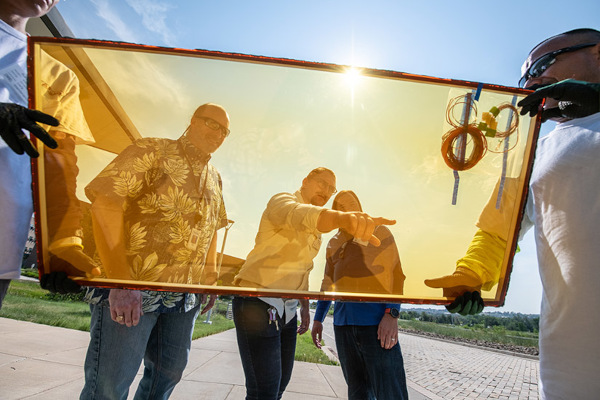
NREL already has a track record for working with companies wanting to commercialize their windows-related technologies. In collaboration with the Wells Fargo Innovation Incubator (IN2), NREL has evaluated many ideas. NEXT Energy Technologies, a California company that developed a coating allowing windows to harness the sun’s energy, went through the IN2 program. So did AeroShield Materials, a Massachusetts startup that uses an aerogel insulation between layers of glass to minimize heat loss. UbiQD, a New Mexico company, had its technology tested in a prominent place at NREL. Five of the startup’s windows, which use an interlayer of quantum dots to capture solar heat for conversion into electricity, were installed at the laboratory’s cafeteria.
All of this research adds up to an indisputable fact: The importance of windows is clear.
Learn more about NREL’s windows research.
 600450
600450




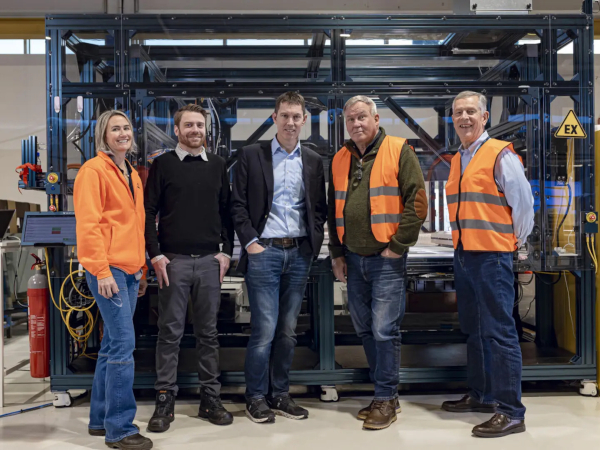


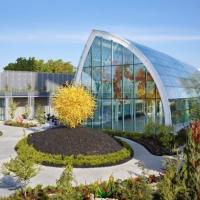
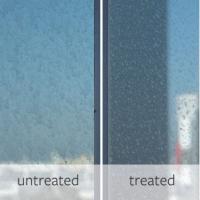
Add new comment